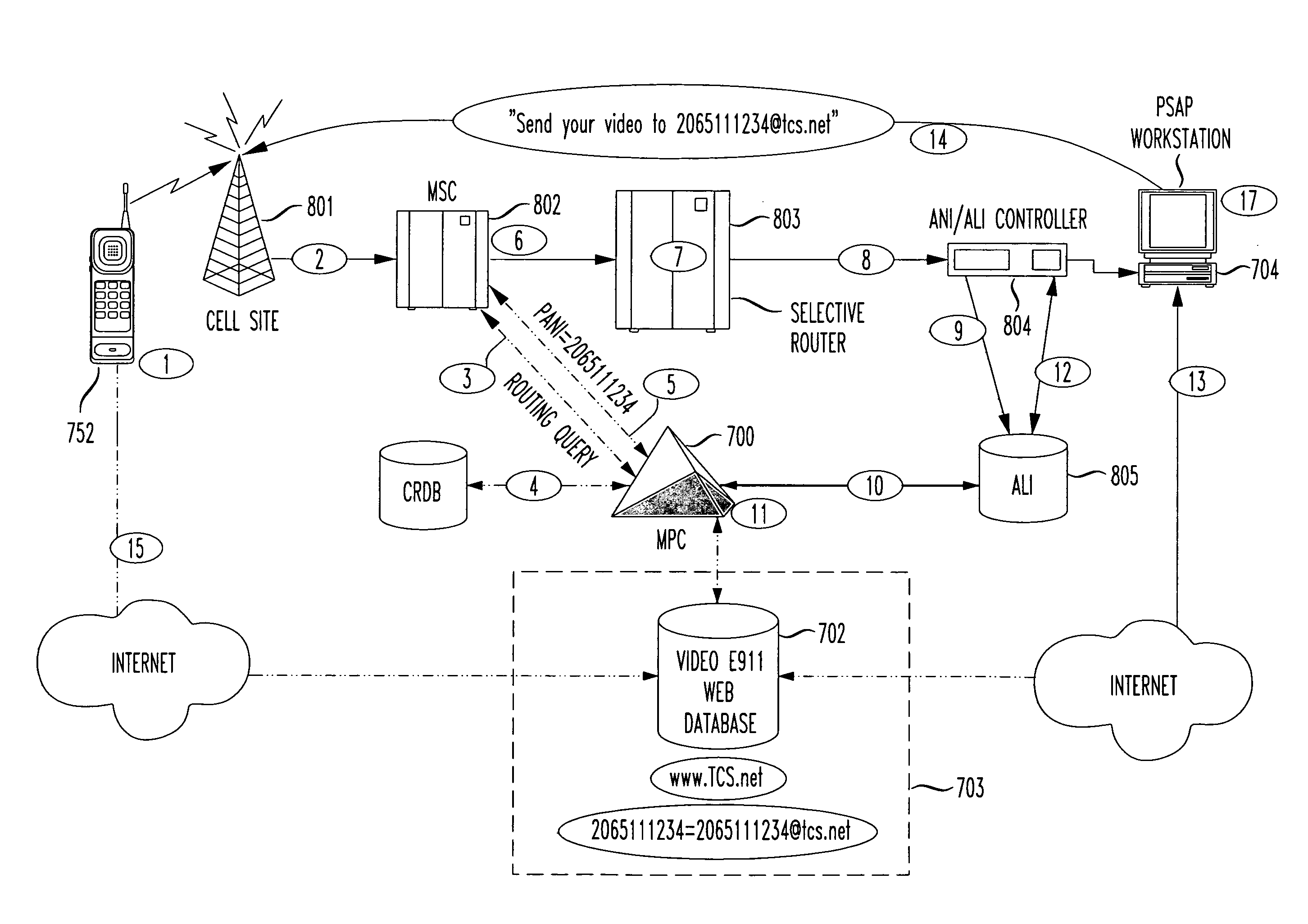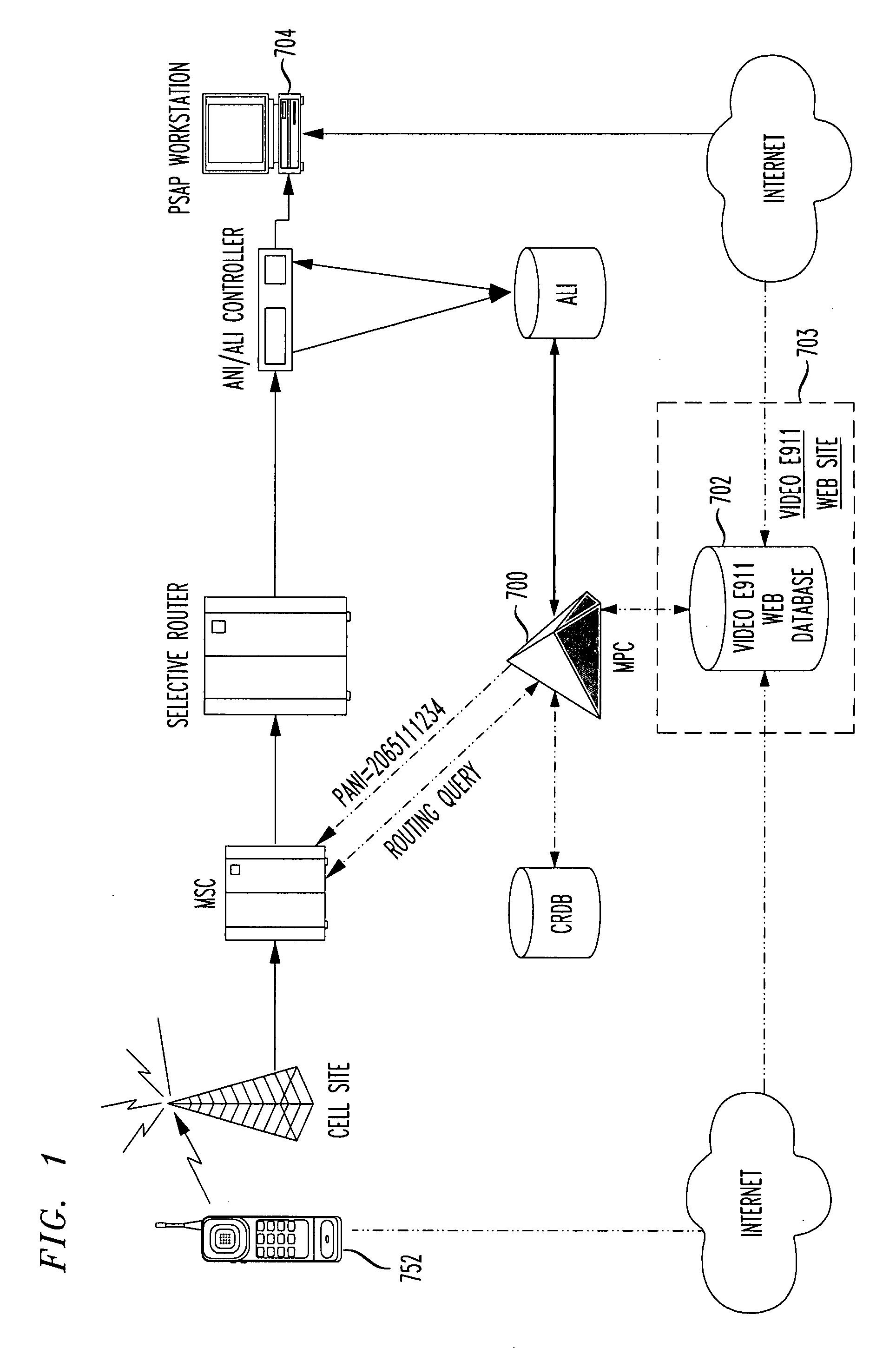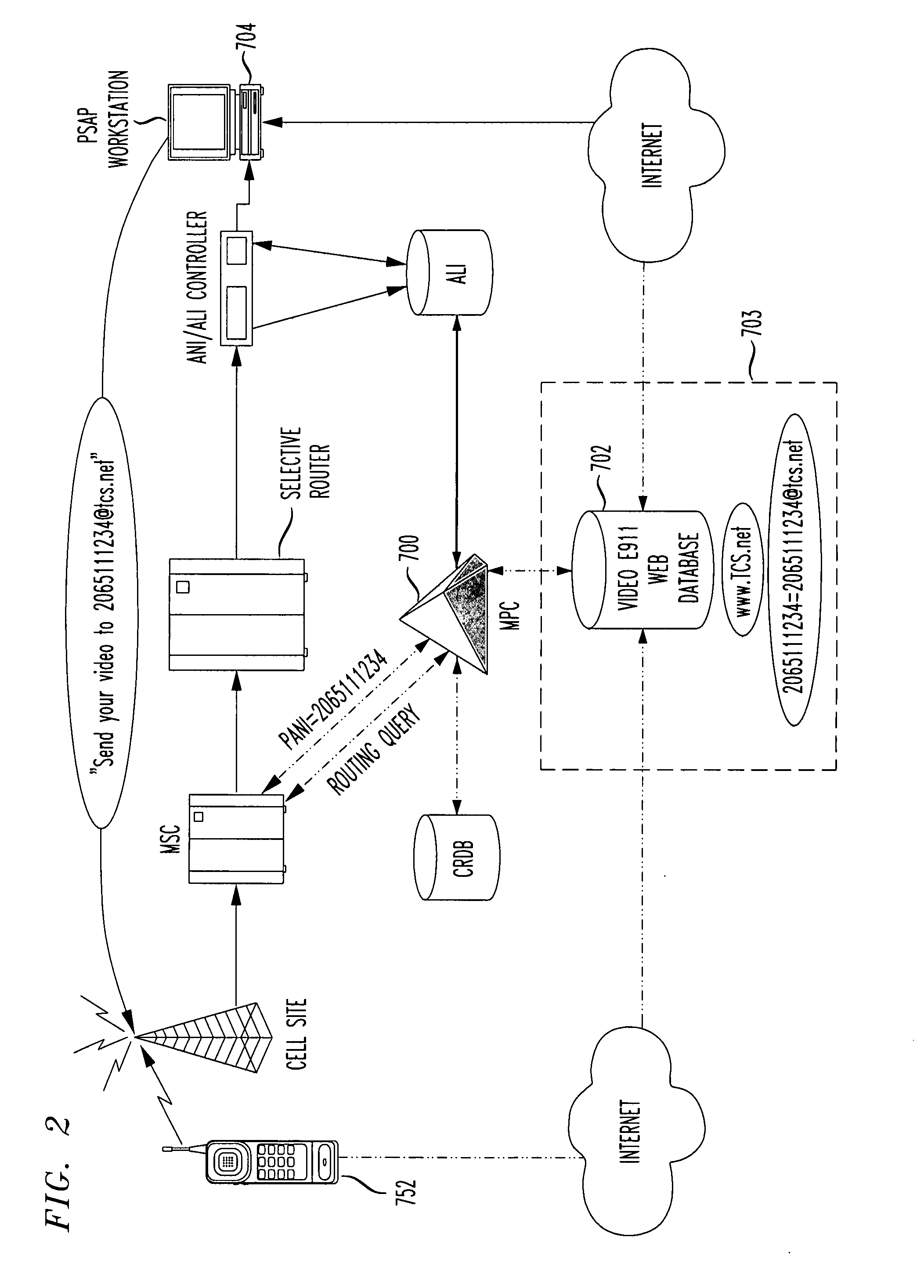Video E911
a call system and video technology, applied in the field of emergency call systems, can solve the problems of no uniform interface between the various psaps for call delivery, no uniformity among the thousands of different psaps for receiving voip calls, and no enhanced public safety access points
- Summary
- Abstract
- Description
- Claims
- Application Information
AI Technical Summary
Benefits of technology
Problems solved by technology
Method used
Image
Examples
Embodiment Construction
[0049]The present invention applies to any E911 call routing technology that employs pseudo Automatic Number Indicators (pANI) to provide video E911 services.
[0050]With the coming of Internet Protocol (IP)-based “Next Generation” E911 services, the present inventor has appreciated that more and more networks include equipment capable of receiving video from a camera-equipped phone. Moreover, the inventor appreciated that most wireless E911 calls employ pANI called Emergency Service Routing Keys (ESRKs). Even most nomadic VoIP E911 calls, and potentially all VoIP E911 calls, use pANI called Emergency Service Query Keys (ESQKs). The present inventor also appreciated the advantages of image content (e.g., digital photograph, digital video clip, digital video stream) to PSAPs during or in relation to an emergency E911 call.
[0051]In accordance with the present invention, the inventor herein provides a video E911 service network wherein a dedicated email address is associated with each ps...
PUM
 Login to View More
Login to View More Abstract
Description
Claims
Application Information
 Login to View More
Login to View More - R&D
- Intellectual Property
- Life Sciences
- Materials
- Tech Scout
- Unparalleled Data Quality
- Higher Quality Content
- 60% Fewer Hallucinations
Browse by: Latest US Patents, China's latest patents, Technical Efficacy Thesaurus, Application Domain, Technology Topic, Popular Technical Reports.
© 2025 PatSnap. All rights reserved.Legal|Privacy policy|Modern Slavery Act Transparency Statement|Sitemap|About US| Contact US: help@patsnap.com



